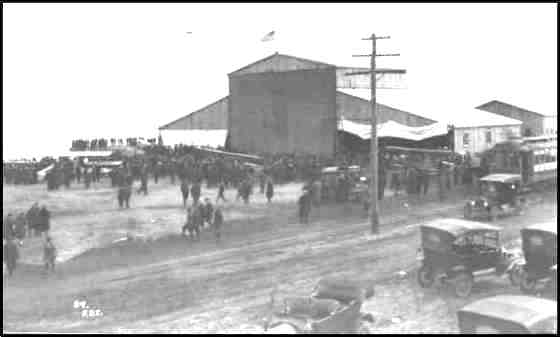
1889-1965 |
 |
with appreciation Lawrence Leon From the Collection of Joe Gertler |
via email from Lucy Leon, 1-16-06 In 1915 he went to work for the Curtiss Co. in Buffalo, New York, and learned to fly in 1916. He was an instructor at the Curtiss Flying School at Newport News, Va., then a civilian flying instructor for the U.S. Army at Kelly Field and Call Field in Texas. He was married in Texas in 1918 to a French girl he met in San Francisco. He enlisted as a private in the Army in 1918 and was recommended for a commission as Captain. As the war ended he was reemployed by Curtiss and sent to Argentina in 1919 to open agencies in that country and Chile. He was on the payroll of Curtiss Export Co. in several capacities in South America until retirement in 1940. |
 |
|
|
|
AS INSTRUCTOR The Curtiss school had the following instructors: Vic Carlstrom, Vic Vernon, Jimmy Johnson, Carl Batts, Steve McGordon, Ted Hequembourg, Lawrence Leon, Bert Acosta, and Stew Cogswell The land planes were JN's and the water planes were F-Boats. We also tested a larger twin float plane type for the Navy. The students came from everywhere; plain civilians, Army officers, Navy officers, National Guards, and many Canadians. The flying was strenuous, but interesting. Each instructor had about ten students, the average length of a flight was 20 minutes and the day lasted about ten hours. We were paid a guaranteed wage of $50 a week, and when we flew more than five hours, each hour after that was worth $10. One week I made $350, so I sat down and mailed Mr. Harop his $300 and interest which he had loaned me two years before. |
|
an extract from A Thumbnail Sketch of my Flying Adventures by MAX HOLTZEM There I flew at the Military Airdrome, "El Palomar", near Buenos-Aires. I was acclaimed by Argentine collegues and was detested by some members of the official French Mission who had come to the Argentine to sell their old war planes. Here I met Lawrence Leon, the Curtiss representative and a very fine fellow, who was showing the Argentines the beauty of his high priced, but low powered, OX Jennies. (civil aviation was still a novelty in the country and the endeavors of ex-war fliers like myself had won much enthusiasm for it. My acrobatic exhibitions and stunt flying, as well as flight instruction and passenger flying, had made me a well known aviation figure in Argentina. I became celebrated as a stunt flyer and formed an air circus and have the distinction of still being the only pilot who had transferred an acrobat from the airplane to a moving automobile in South America. This stunt was performed over ordinary dirt roads along the flying fields and in front of the grandstands in horse race tracks. These roads were bumpy, dusty and had straight stretches of only a few hundred yards in length so that the car could never pick up the speed necessary to make the transfer with ease. We had sand bags tied to the lowest rungs of the rope ladder to hold the ladder in position while flying. Many times the driver had been walloped over the head with these sand bags at a speed of 100-120 miles per hour and often times they refused to continue driving as they did not relish the idea of having their brains spattered all over the dirt race tracks of South America. We made our appearances in closed-in "Sportivas" and horse racing tracks....loose dirt, dusty, short straightaway stretches, sometimes on an up-hill grade, with posts and rails to either side of the road only a few feet from the Jenny's upper shoulder... We encountered side winds too and unbearable heat over the tracks so that I neared the dangerous speed very often. The motor car used was not a racing model but always a stock model of a very popular make. I have several books filled with clippings and photographs which tell my story and I can speak of many interesting incidents of those days of daring flying with my two acrobats. One of the acrobats was a young German lad who was later killed (but not by me) while stunting in Chile, and the other acrobat was a very adventurous young lady who created quite an uproar with her daredevil stunting. I remained in South America for almost ten years and started just in time to take my share in the boom which surely was to follow Lindbergh's feat for America. I left Argentina for the United States shortly thereafter. Holtzem |
|
|
|
You will find sections devoted to Aero Engines, Instruments, Race Cars & History, Docs & Signatures, Aviation Art, Wright Brothers, Misc. & Other and "For Sale." You can visit the site by clicking on the title above. |


|